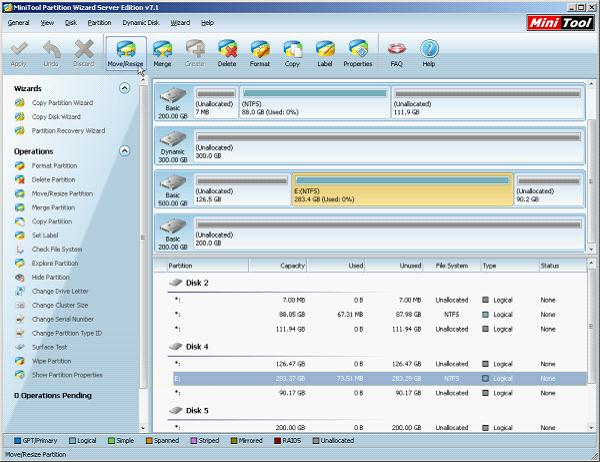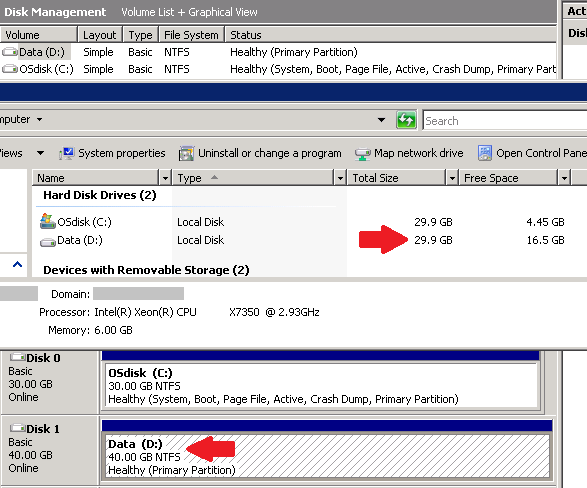
- WINDOWS 2008 DISK MANAGER WINDOWS 10
- WINDOWS 2008 DISK MANAGER SOFTWARE
- WINDOWS 2008 DISK MANAGER WINDOWS 8
The area of the disc that is used for holding LDM volumes themselves. The area of the disc that is used for holding configuration data that describe the volumes that LDM manages. Partition table types ID ( GUID Partition Table and MBR Partition Table) It is possible to have 2000 dynamic volumes per dynamic disk, but the maximum recommended by Microsoft is 32.

The volumes are referred to as dynamic volumes. The main disadvantage of dynamic disks in Microsoft Windows is that they can only be recognized under certain operating systems, such as Windows 2000 or later (excluding versions such as Windows XP Home Edition, and Windows Vista Home Basic and Premium ), FreeBSD, or the Linux kernel starting with version 2.4.8.ĭynamic disks under Windows are provided with the use of databases stored on disk(s).
WINDOWS 2008 DISK MANAGER SOFTWARE
Finally, data from the backup must be copied back over to the newly re-formatted basic disk.ĭynamic disks provide the capability for software implementations of RAID. Second, the dynamic disk must be re-formatted as a basic disk (erasing all data). To perform a downgrade, data on the dynamic disk must first be backed up onto some other storage device. Volumes can use any supported file system.īasic disks can be upgraded to dynamic disks however, when this is done the disk cannot easily be downgraded to a basic disk again. Dynamic storage involves the use of a single partition that covers the entire disk, and the disk itself is divided into volumes or combined with other disks to form volumes that are greater in size than one disk itself. This is the route that all versions of Windows that were reliant on DOS-handled storage took, and disks formatted in this manner are known as basic disks.
WINDOWS 2008 DISK MANAGER WINDOWS 8
On Windows 8 and Windows Server 2012, Microsoft deprecated LDM in favor of Storage Spaces.

The MMC-based Disk Management snap-in ( diskmgmt.msc) hosts the Logical Disk Manager.
WINDOWS 2008 DISK MANAGER WINDOWS 10
It was introduced with the Windows 2000 operating system, and is supported in Windows XP, Windows Server 2003, Windows Vista, Windows 7, Windows 8, Windows 10 and Windows 11. The Logical Disk Manager ( LDM) is an implementation of a logical volume manager for Microsoft Windows NT, developed by Microsoft and Veritas Software.

JSTOR ( July 2008) ( Learn how and when to remove this template message).Please improve this by adding secondary or tertiary sources.įind sources: "Logical Disk Manager" – news

This article relies excessively on references to primary sources.


 0 kommentar(er)
0 kommentar(er)
